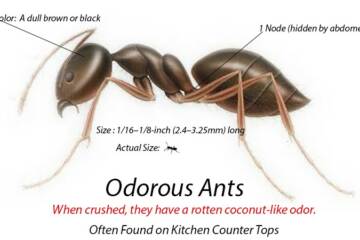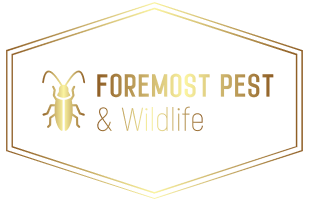Odorous House Ant
The odorous house ant (Figure 10) is probably the most common house-infesting ant species in North Carolina. Their name comes from the odor similar to rotten coconut that is noticeable when you crush them. Workers are about 1⁄8-inch long and brown to black in color. There is one node on the pedicel that is hidden by the overlapping abdomen (see the picture to right). Colonies may contain several hundred to 100,000 workers and contain multiple queens. New colonies are formed primarily by budding; however, occasional mating swarms may occur in late spring. Odorous house ants can nest in many different places. Outdoors, they may build their nests in mulch, in piles of logs, firewood, boards, and other debris. They may also nest beneath stones, sidewalks, patio blocks, and concrete slabs. Indoor nest sites may include wall voids, window frames, in insulation in an attic or between batts of insulation and crawlspace subflooring. Indoors, odorous house ants are typically attracted to sugary food items. Outdoors, they feed on the honeydew secreted by aphids and other insects on shrubs and trees.
Article credit: Patricia Alder, Training Coordinator, Entomology & Plant Pathology
Michael Waldvogel, Extension Specialist (Household & Structural Entomology), Entomology & Plant Pathology

